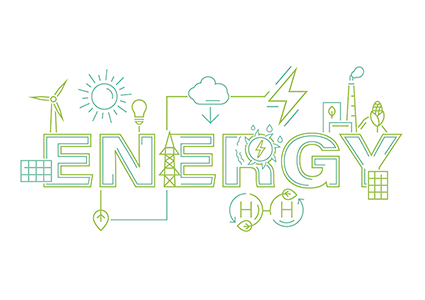
Will 2023 be renewable energy’s year? By Carl Winkle and Lucy Padfield
There is nothing like a global energy crisis to sharpen the mind. While a concerted shift to carbon neutral energy solutions was already underway, recent world events have created renewed impetus. As a consequence, governments across the world are trying to shelter consumers from higher energy prices, reduce dependence on foreign supplies and are proposing new decisive policies to accelerate the transition to clean energy technologies.
With this greater focus and demand, there is increased interest in both improving existing renewable energy solutions and bringing new technologies to market.
 The growing renewable energy generation
The growing renewable energy generation
Year-on-year we are witnessing record increases in additional global renewable energy generation capacity, with the total worldwide generation now at over 300GW, doubling in capacity compared to 2015.
Solar PV and Wind dominate the renewable energy mix worldwide, both steadily improving in their efficiency. Solar PV has benefitted from improved wafer and cell design, while the wind sector has experienced gains thanks to larger turbines providing increased yields. With electricity accounting for only a fifth of global energy consumption however, there is a greater need for power system flexibility. This flexibility is needed to integrate high shares of variable renewables in a reliable and cost-effective manner and, perhaps even more critically, we must consider the role of renewables in the transition of the transportation and heating sectors to clean energy.
The renewable energy off-take constraints
While variable renewable energy yield increases, maximizing its offtake is primarily hindered by grid constraints. It already regularly leads to grid curtailment in countries with significant renewable energy production. While grid reinforcement offers the most direct solution, it is also the costliest. A more holistic approach is likely required to maximize the benefit of the ever-increasing renewable energy yield.
Fortunately, there are existing approaches we can take to address grid constraints: reduction in consumption through improved energy efficiency; demand stabilization by use of storage; and encouraging the use of smart tariffs and smart meters to enable energy consumers to change their behaviors in response to peaks and troughs of energy generation. These various approaches can all contribute to alleviating grid constraints.
Renewable energy solutions and technologies
 Storage is one of many attractive options that would provide energy system flexibility, as it can be deployed quickly and modularly when and where flexibility is needed. Pumped-storage hydropower, for example, is the most widely used storage technology and has significant potential in several regions.
Storage is one of many attractive options that would provide energy system flexibility, as it can be deployed quickly and modularly when and where flexibility is needed. Pumped-storage hydropower, for example, is the most widely used storage technology and has significant potential in several regions.
Batteries are the most scalable type of grid-scale storage, from which the market has seen strong growth in recent years. Battery storage allows for energy to be either held on the site where it was generated or after it has been exported to the energy grid. Increasing the number of batteries will reduce the incidence of curtailment and its associated costs because excess energy can be saved for later use.
In theory, storage can be paired with any energy service. As such, better energy storage technologies would open up opportunities to integrate larger quantities of renewable energy into the energy system as a whole, thus helping to replace fossil fuels in a variety of applications.
Decarbonizing heat
While energy discourse has traditionally focused on power generation and use, here in the UK we use gas (oil in rural areas) to heat our buildings. Decarbonization of heat means ending fossil fuel combustion – effectively the electrification of heat, and the biggest energy infrastructure investment since the UK left coal behind in the 1960s. Doing this will involve optimizing a complex equation that includes new heating infrastructure and the inevitable power grid reinforcement costs in addition to building fabric improvements to achieve the lowest cost low carbon heat solution.
But the benefits of successful decarbonization of heat are huge: coming off gas increases national security of supply while mitigating contributions to climate change. Heat networks – which can use heat sources including rivers, data centers, or even the London Underground to drive heat generation – will clearly be part of the climate adaptation and resilience solution.
Mature heat network markets like Denmark are finding that they can also provide useful renewable electricity storage and balancing in the simple form of hot water. Heat zoning pilots are taking place now across England, testing approaches to provide lowest cost, low carbon heat to the end-consumer, with the government committing to introduce heat zoning in England by 2025.
Scaling renewable energy infrastructure
Energy security has never been so high up the agenda as it has been in recent times, but the key takeaway should be that we do have the existing technology to achieve the green energy transition. The first step is for all stakeholders to accept that renewable energy must lead front and center. Only then will we identify opportunities to increasingly incorporate the effective, renewable solutions that we urgently need. We all know if something isn’t working, it’s time to try a different approach. Energy supply is by no means different.
Carl Winkle is Chief Engineer and Lucy Padfield is Director, Energy, at Ramboll. Ramboll is a global architecture, engineering and consultancy company founded in Denmark in 1945. Its 17,000 experts create sustainable solutions across Buildings, Transport, Energy, Environment & Health, Water, Management Consulting and Architecture & Landscape.